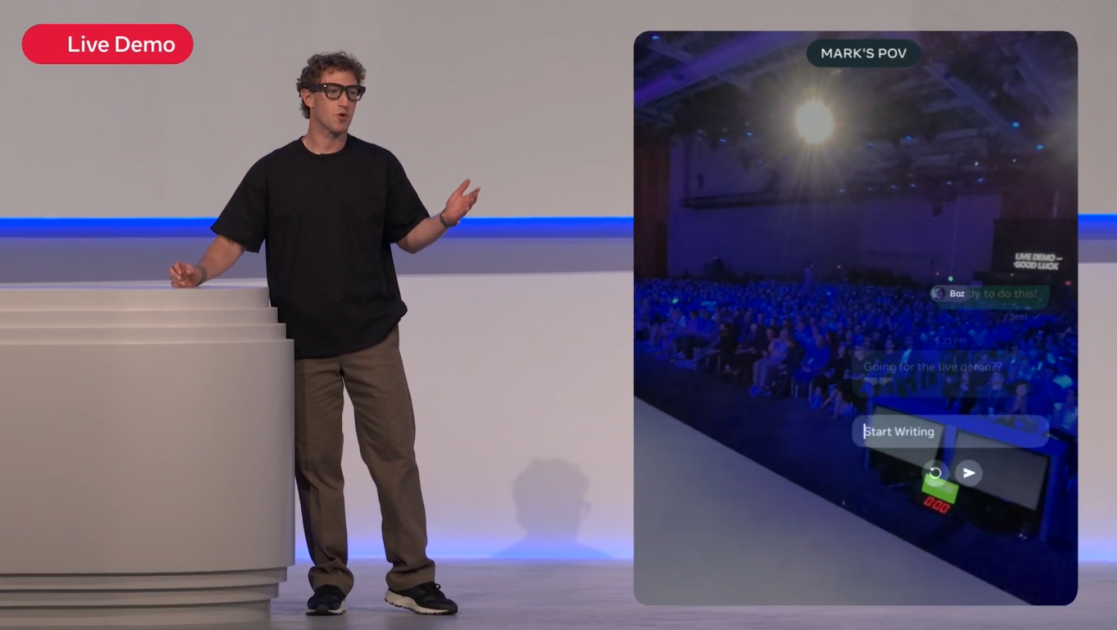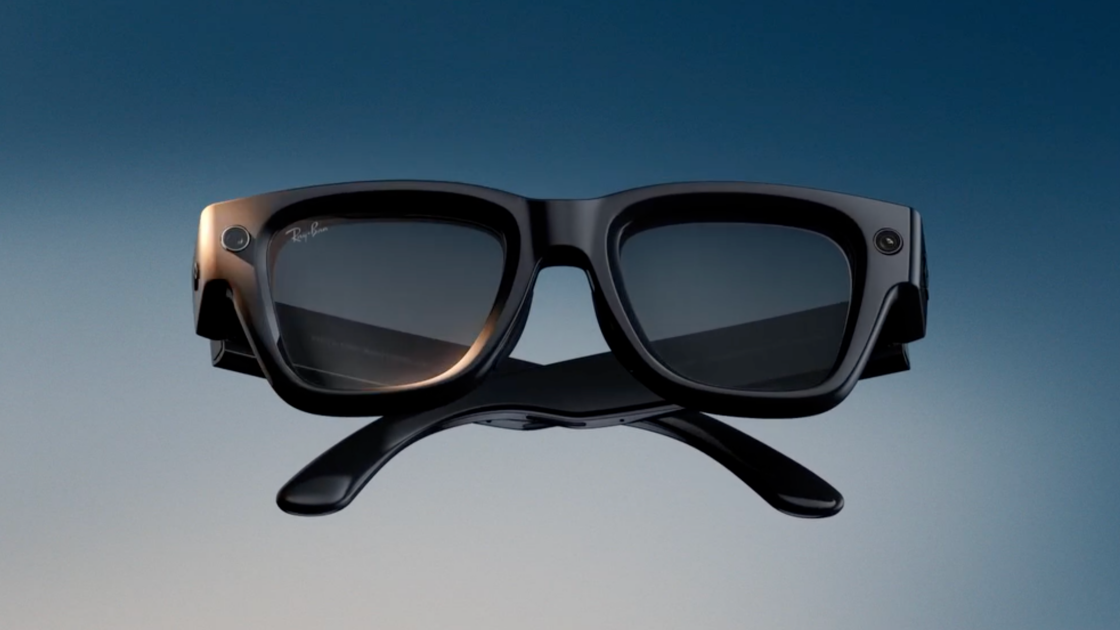Meta Explains Multip…

Don’t miss out on our latest stories. Add PCMag as a preferred source on Google
UPDATE 9/19: Meta’s CTO has weighed in on its demo failures to blame network overload and an obscure bug for the incidents.
“When the chef said, ‘Hey Meta, start Live AI’, it started every single Ray-Ban Meta’s Live AI in the building, and there were a lot of people in that building,” Andrew “Boz” Bosworth said on Instagram Stories today.
That didn’t happen in rehearsal, he said, and Meta had routed Live AI traffic to its dev server to isolate it. “But we hadn’t done it for everyone in that building and those access points, which included all of those headsets. So we DDoS’d ourselves basically.”
A distributed denial-of-service (DDoS) attack is a coordinated effort to flood a website with traffic and take it offline. If Meta’s servers can’t handle a couple thousand requests, what does that say about the technology? “How can 10’s of devices DDOS ~META’s~ servers?” one X user wrote. “An accidental DDOS attack (maybe 100 devices) against META servers is the wildest excuse I’ve ever heard,” another added.
Bosworth isn’t concerned. “Obviously, I don’t love [the demo fails], but I know the product works. I know it has the goods, so it really was just a demo fail and not a product failure.”
The video call issue, meanwhile, was “a bit more obscure,” he says. The display went to sleep the very instant the notification came in about an incoming call. But even when Zuckerberg woke the display back up, it didn’t show the answer notification tool, so he couldn’t answer.
“We’d never run into that bug before, Bosworth says. “It’s fixed now.”
Original Story (9/18):
It was a rough night for Meta after the company botched two onstage demos of its latest smart glasses at its annual Connect conference.
The idea behind the specs is that a live AI assistant can see what’s in front of the wearer and answer questions about it, allowing people to “stay present in the moment, while getting access to all these AI capabilities that make you smarter,” says CEO Mark Zuckerberg.
That’s hard to do with glitchy tech. The first flop happened when an Instagram influencer, shown on the stage via a video call, asked the AI to help him prepare a Korean sauce. Before the demo started, Zuckerberg noted the company is still working through some “major technology challenges” regarding Live AI, particularly the ability to have access to it all day. To start, it’ll be available for only an hour or two at a time.

Get Our Best Stories!
Your Daily Dose of Our Top Tech News

By clicking Sign Me Up, you confirm you are 16+ and agree to our Terms of Use and Privacy Policy.
Thanks for signing up!
Your subscription has been confirmed. Keep an eye on your inbox!
The Korean cooking demo begins at Connect. (Credit: Meta)
“Hey Meta, start Live AI,” the influencer says. The AI accurately determines he has ingredients and empty bowls in front of him, and is ready to start cooking. After some small talk, the influencer asks the AI how to make a Korean-inspired steak sauce. The AI begins talking and the influencer interjects with a more specific question, “What do I do first?”
The ability to interject and speak more fluidly to an AI, as someone would to a human, has been a focus of voice technology over the past two years. It’s something OpenAI touts about its Voice Mode, Apple improved with Siri last year, and Amazon added to Alexa+.
Meta’s AI got tripped up by the interjection and did not register what the influencer said, so he repeated it. When the AI finally responded, it inaccurately assessed that he’d already combined some ingredients, which he had not touched.
“You’ve already combined the base ingredients, so now grate a pear to add to the sauce,” says the robotic female voice. The would-be chef awkwardly smiles, taps the glasses to reset, and asks,” What do I do first?” again. The crowd begins to laugh.
Recommended by Our Editors
“Sorry, I think the Wi-Fi might be messed up,” he says. “Back to you, Mark.” Zuckerberg also blames the Wi-Fi, but keeps a cool head for the most part. But the second time the tech flubs, he was visibly upset.
This Tweet is currently unavailable. It might be loading or has been removed.
This time, Zuckerberg performed the demo himself, showcasing the new neural band technology, which he calls a “huge scientific leap.” The glasses pair with a wristband, Meta’s innovation to replace a keyboard and mouse for smart glasses. It interprets small muscle movements in the wrist and controls the glasses.
A main use for the neural band is sending text messages, which Zuckerberg calls “one of the most important and frequent things we do on our phones.” He pulls up a text thread on his glasses, which the crowd can see, and shows how he can “type” by writing the letters on a table with his hand. The glasses interpret his hand motions and input the text in the chat box.
Things go awry when Zuckerberg attempts to answer a call on his glasses with the neural band by tapping his fingers in a quick motion. He has Meta CTO Andrew “Boz” Bosworth call him on WhatsApp. The call comes in on the glasses, but Zuckerberg cannot successfully answer it with his fingers. “That’s too bad. I don’t know what happened,” he says after the first attempt. “Umm…maybe Boz can try calling me again.”
He gets a second call from Boz. “Alright, I’m going to pick this up with my neural band,” Zuckerberg says, spastically moving his fingers in a last-ditch effort, but it fails again. “It happens,” he acknowledges.
Boz tried calling four times, and Zuckerberg concluded it was his fault: “I keep messing this up.” Boz then called for a fifth and final time, and Zuckerberg still could not answer the call with the neural band. Defeated, he concluded,” I don’t know what to tell you guys. We’re just going to go to the next thing, and I hope that will work.”
Luckily, the next time Zuckerberg tries to use the neural band, by quickly tapping his fingers together to pull up a song on Spotify, it works. Neither Meta nor Zuckerberg has commented on the demos post-event, as Zuckerberg did earlier this month to acknowledge another awkward moment when he was caught on a hot mic at the White House.
About Our Expert

Emily Forlini
Senior Reporter
Experience
As a news and features writer at PCMag, I cover the biggest tech trends that shape the way we live and work. I specialize in on-the-ground reporting, uncovering stories from the people who are at the center of change—whether that’s the CEO of a high-valued startup or an everyday person taking on Big Tech. I also cover daily tech news and breaking stories, contextualizing them so you get the full picture.
I came to journalism from a previous career working in Big Tech on the West Coast. That experience gave me an up-close view of how software works and how business strategies shift over time. Now that I have my master’s in journalism from Northwestern University, I couple my insider knowledge and reporting chops to help answer the big question: Where is this all going?
Read Full Bio


